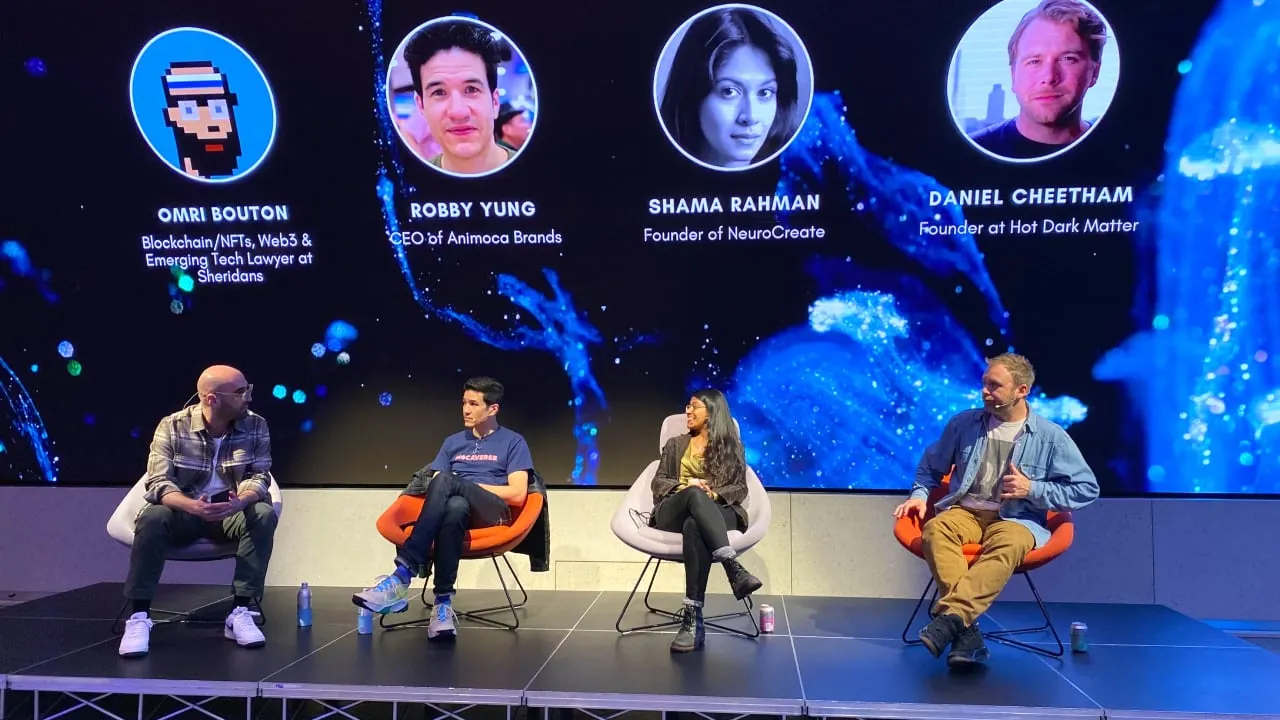An open, interoperable metaverse would enable Web3 games to carry out DeFi-style "vampiric attacks" in order to reach other titles' audiences, said Animoca Brands CEO Robby Yung.
Speaking at an NFTUK event in London, Yung gave the example of a racing game using NFTs to represent cars. "Let's say we both make racing games and I have one with tonnes of players. There's a huge opportunity for an indie to make another racing game and essentially—the DeFi people call it a vampiric attack—create utility for all those players."
Interoperablility between two games' NFTs would enable the newer title to create a user acquisition funnel to draw over users from the more established game, Yung said. "That brings a lot of people in to at least try what you have on offer from my community, because you're providing that interoperability," he explained. "Some may stay and some may leave, but you can at least use that as part of your funnel."
In the world of decentralized finance (DeFi), vampire attacks occur when new projects offer better incentives than established projects to draw liquidity away from the original project and into the new one.
In gaming, Yung suggested, it would be more of a virtuous cycle. "If your players come to my game, and they enjoy using their cars in my game, then I create additional utility for your cars," he said, adding that it does depend on there being a royalty infrastructure in place. "When those cars transact in the future, you receive your commensurate benefit, because you're due the creator royalty."
Yung conceded that achieving interoperability between games is "incredibly hard," arguing that developers need to collaborate to create a "community-led snowball effect" through projects such as the Open Metaverse Alliance, of which Animoca Brands is a founding member.
The Venn diagram of “people willing to come out 5 days before Xmas” and “Web3” overlaps at @WeAreNFTUK. 💪 Thank you, @milalolli for gathering such a great group! 🙏
It was a privilege to share the stage with @omribouton, @TheShamaRahman, and @hotdarkmatter_ and chat about… pic.twitter.com/lvFf3lKRB2
— Robby Yung ⦿⦿⦿ (@viewfromhk) December 20, 2023
In the short term, Animoca Brands is looking to draw mainstream gamers into the Web3 ecosystem by "abstracting the web3 bits to the back," Yung said. For its flagship title The Sandbox, Animoca Brands "made the conscious choice of putting all the game logic in centralised fashion," he explained.
"Our feeling was that the important bit to be on chain is the registration of ownership, either of fungible in game currency, or of the playable NFTs," Yung said. Ownership of these digital assets needs to be demonstrated on a public ledger, he explained, while the game logic itself has performance criteria. "You want it to be a low cost so that you can pass on the low cost infrastructure to your customers," he added.
Yung noted that Web3 middleware has reached a state of maturity that enables Web2 game developers to "easily integrate backends," such as custodial wallet solutions and minting solutions. Web2 developers who don't have their own team of blockchain engineers can now "actually start to use Web3 rails inside their products," Yung said.
"You see a lot of gaming products coming out into the market now, which are kind of the very sophisticated, easy to use products that you would expect from gaming experiences outside of Web3—but it took a while to get to that point," Yung said, noting that games "take a while to make, so we're just starting to see some of those come out now."
He added that the majority of gamers have "already been habituated into Web2, where they don't deal with anything, all of their investments in the game, or credits that they they insert into the game, are sitting in the hands of the custody of the game platform or the game developer." When Web3 titles offer custodial wallet solutions, with the Web3 component abstracted away in the backend, he said, "they're more than happy to embrace that."
Edited by Stacy Elliott.

